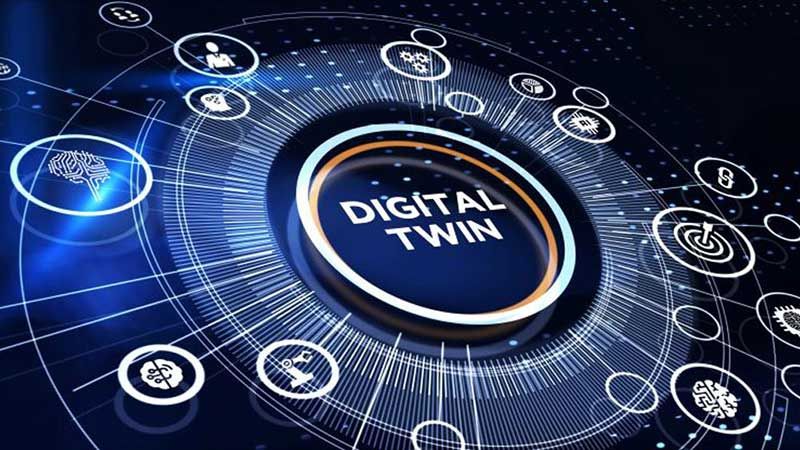
The advent of digital twin technology has been a remarkable journey, starting from its inception by NASA during the space exploration missions in the 1960s and later finding widespread application in manufacturing around 2002. Over the past decade, the global water and wastewater utilities sector has embraced digital twin technology, recognizing its immense power and the transformative outcomes it can deliver.
While digital twin technology offers the potential for enhanced operational resiliency, it is often perceived as a standalone solution capable of solving problems independently. However, to fully unlock its potential, utilities must grasp the broader role of digital twins within the digital ecosystem. Merely understanding the current state of a physical asset, process, or system is insufficient. Utilities need to explore how they can leverage digital twin technology to its maximum effect.
At its core, a digital twin serves as a fusion of data and a computer model that enables operators to comprehend the expected behavior of a system. Through the incorporation of variables, such as changes in water levels due to rainfall, it becomes possible to make predictions. Essentially, data integration is utilized to identify and diagnose anomalies, test various scenarios, and forecast outcomes specific to those scenarios.
When digital twin technology is combined with advanced data science, like hydroinformatics, and expertise in water systems, utilities can unlock its full potential. For instance, by merging hydraulic modelling expertise with traditional civil and environmental engineering knowledge, hydroinformatics engineers assist utilities in extracting insights from data by designing algorithms that deliver the most relevant information in a timely and effective manner. Furthermore, this integration allows for autonomous and optimized control of the system, while still providing oversight to the operator for final decision-making.
This augmented digital twin empowers utilities to make sense of their data, providing improved visibility and predictive capabilities that significantly enhance decision-making related to both capital investments and operational aspects. Digital twins play a crucial role in the development of intelligent and sustainable water management platforms, providing robust decision support frameworks for today's workforce. Specifically, cloud-based digital twins offer the advantage of remote data sharing, interactive dashboards, and real-time situational intelligence. This innovation addresses the limitations of traditional water control rooms by seamlessly integrating with various systems, including SCADA, data historians, and real-time data sources.
By leveraging a cloud-based digital twin, organizations can efficiently process and analyze vast amounts of diverse data sources, enabling them to gain valuable insights in near real-time. Additionally, this technology helps mitigate the occurrence of false alarms, reducing unnecessary disruptions. Overall, a cloud-based digital twin enhances water management capabilities by facilitating effective data interoperability, advanced analytics, and improved response mechanisms.
Many utilities already possess hydraulic models of their water networks, which they utilize for planning and design purposes. However, by integrating these models into a digital twin, utilities can enhance their ability to simulate various events, such as pipe failures or power outages, to evaluate the resilience and assess the risks associated with their water network systems. Additionally, the integration of these models with SCADA data provides an accurate representation of the current behavior of the water system.
This integration empowers utilities to simulate and test different operational approaches for their water systems, aiming to enhance emergency response, improve overall efficiency, and optimize energy consumption. By continuously updating digital twins with operational data, utilities can identify potential leak locations and minimize water loss.
Digital twins have proven to be highly beneficial for water and wastewater treatment plants, offering significant improvements in plant efficiency, reliability, resilience, and overall safety compliance. These virtual replicas enable personnel to conduct virtual walkthroughs, enhance communication, and simulate scenarios, providing them with enhanced visibility into plant data and valuable insights for informed decision-making.
Digital twins can flag real issues, such as equipment that is not functioning correctly, facilitating virtual exploration and granting immediate access to relevant data. For instance, operators can zoom into specific equipment areas and retrieve crucial information like manufacturers' specifications or repair manuals. This eliminates the need for time-consuming searches through physical file cabinets or document libraries, providing personnel with instant access to the information they require.
Digital twins empower water and wastewater treatment plant personnel by offering virtual walkthroughs, improved communications, and simulation capabilities. They enhance decision-making processes, support preventive actions, and expedite access to pertinent data, contributing to enhanced plant efficiency, reliability, and safety compliance.
Digital twin technologies serve as intelligent integration solutions that bring together information technology, operational technology, and engineering technology. These connections are revolutionizing the way water utilities harness their data, unlocking possibilities that were economically impractical until recently. By merging legacy data with operational and engineering data, digital twins offer a comprehensive view of a utility's water system, enabling data-driven decision-making processes. This integration empowers utilities to leverage their data in ways that were previously unattainable, facilitating more informed and efficient operations.